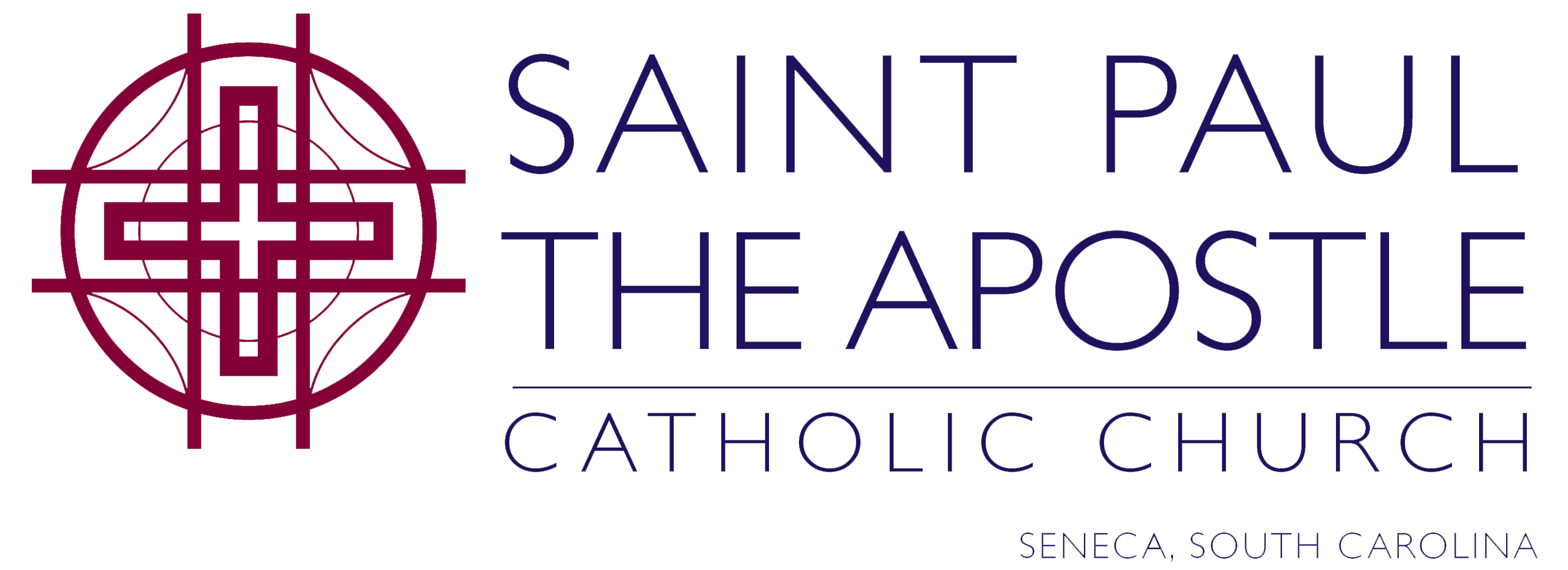PARISH HISTORY
Our StoryIn 1842, the Blue Ridge Railroad decided to build a railroad through Stumphouse Mountain (north of Walhalla, SC) to link the thriving port city of Charleston with Knoxville, TN and thus to westward expansion. Several hundred Catholic Irish and German immigrants were hired. A new settlement, Tunnel Hill, was established near the construction job. Saint Patrick Church, the first Catholic church west of Columbia, SC, was built there and flourished until 1859. The lack of state funding and the onset of the War Between the States resulted in suspension of the tunnel project. Most laborers returned north; a few remained in the Upstate. The church was used and ravaged by homeless Civil War conscripts. In 1871, the last Mass was celebrated in the remaining church. After that, Mass was celebrated in homes when a mission priest was available, sometimes not for months.
In 1916, Saint Francis Church, a mission church, was built in Walhalla. Parishioners donated the land, the lumber, and the manpower. There were less than twelve Catholic families in Walhalla, yet there were other Catholics who came from miles around to attend church. Mission territory was headquartered in Columbia, Greenville, and Anderson.
In 1935, through a generous gift of the Gallivan family of Greenville, SC, Saint Andrew Chapel was built for the handful of Catholic cadets at Clemson College. The Gothic-style chapel was constructed of granite quarried in nearby Elberton, GA. The seating capacity of the new church was eighty-four. Bishop Russell’s observation to the thirty people attending the dedication was, “Perhaps we have overbuilt.”
By 1940, Oconee and Pickens Counties were ready to become a separate parish from Saint Joseph in Anderson, numbering 128 Catholics and 52 cadets. The Paulist Fathers were asked to serve the two counties. They hoped not only to serve and educate the Catholic population, but also to promote better understanding with their Protestant neighbors. Due to the proximity of Clemson College, Saint Andrew became the center of the new church. Saint Francis became known as the “out-mission.”
There were about thirty, mainly Czechoslovakian, Catholic families living in Fair Play. In 1943, Saint Ann Church was built. In 1944, a Catholic businessman from Philadelphia established a textile woolen mill, employing many of the parishioners. However, the project eventually failed, leading to the demise of the church.
Throughout the 1960’s, many new industries moved into Oconee County. In 1973, Duke Power Company built the vast Lake Keowee. These changes brought many people from the Midwest and Northeast; and the Catholic population grew. In the 1950s, 1960s and 1970s, Saint Francis was expanded, adding a new meeting room, classrooms, bathrooms, and kitchen facilities. In 1985 and 1986, Piedmont Quilting Company moved from N.Y. and N.J. to Walhalla. As many of their employees moved with them, a Spanish Mass began to be celebrated at Saint Francis.
Owing to the growth of the greater Clemson area and the need for more accommodating facilities for the parish and university communities, a new multipurpose building was constructed in 1979-80 adjacent to Saint Andrew Chapel. This new building provided a large flexible space for worship, social gatherings and education. In 1994 pews were installed to enhance the worship space. In 2010 a tabernacle was placed in the church to permanently host the Blessed Sacrament.
Anticipating future growth, in 1987, land was bought on Bountyland Road, northwest of downtown Seneca. Both Saint Francis and Saint Andrew were overcrowded. In 1994, Saint Paul the Apostle Church was built. The members of Saint Francis and Saint Andrew celebrated the Christmas Masses jointly that year. In the words of Father Charles Kullman, CSP, who was instrumental in acquiring the property and starting the building project: “We celebrate because we have hope; hope in our future in this area that we will become, more and more, not just an exotic transplant from someplace else, but a truly indigenous church – genuine South Carolina Catholics.
In 2000 a large educational and social building were constructed next to Saint Paul Church. This building was named Papineau Hall to honor the Papineau Family of the church. Several years later the first phase of a columbarium was constructed to house the final remains of deceased members and their loved ones.
With the ongoing growth of Oconee County in the first decade of the 21st century, due to industry, relocation of retirees and the influx of Spanish-speaking peoples, Saint Paul the Apostle continued to embrace more and more communicants to the point that it had become double the size of its mother church, Saint Andrew in Clemson.
In early 2012, members of all three parish churches — Saint Andrew, Saint Paul and Saint Francis — were asked to participate in a feasibility study to determine whether Saint Paul should become its own parish with Saint Francis as its mission. After a series of town hall meetings, surveys and other studies, in September 2012 the members of the parish voted widely in favor of requesting that the Bishop of Charleston elevate Saint Paul from mission to parish. On October 2, 2012, Bishop Robert Guglielmone granted the request.
On November 30, 2012, the feast day of Saint Andrew, members of all three churches gathered at Saint Andrew Church in Clemson to celebrate the Catholic community’s past, present and future. Priests who had served in the past were present as were the new priests from the Franciscan Friars called to serve Saint Andrew.
The next day, December 1, 2012, Saint Paul the Apostle became the newest parish in the United States, poised for continued growth and development as the Catholic Church becomes a more visible and accepted community of faith in the Upstate of South Carolina.
All to the glory of God. Amen.
